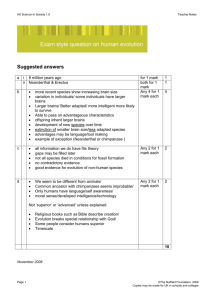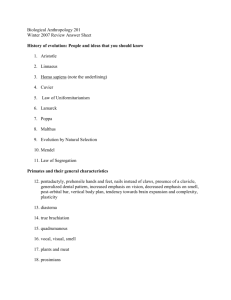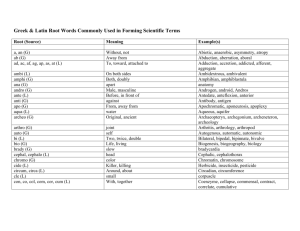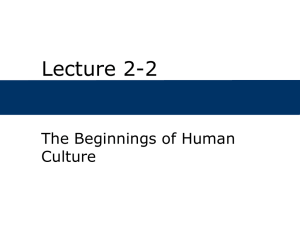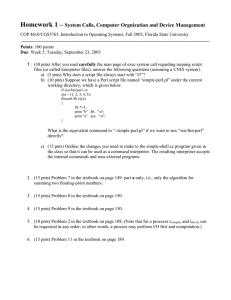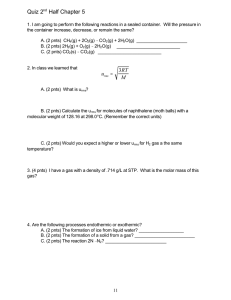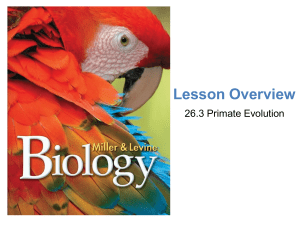File
advertisement
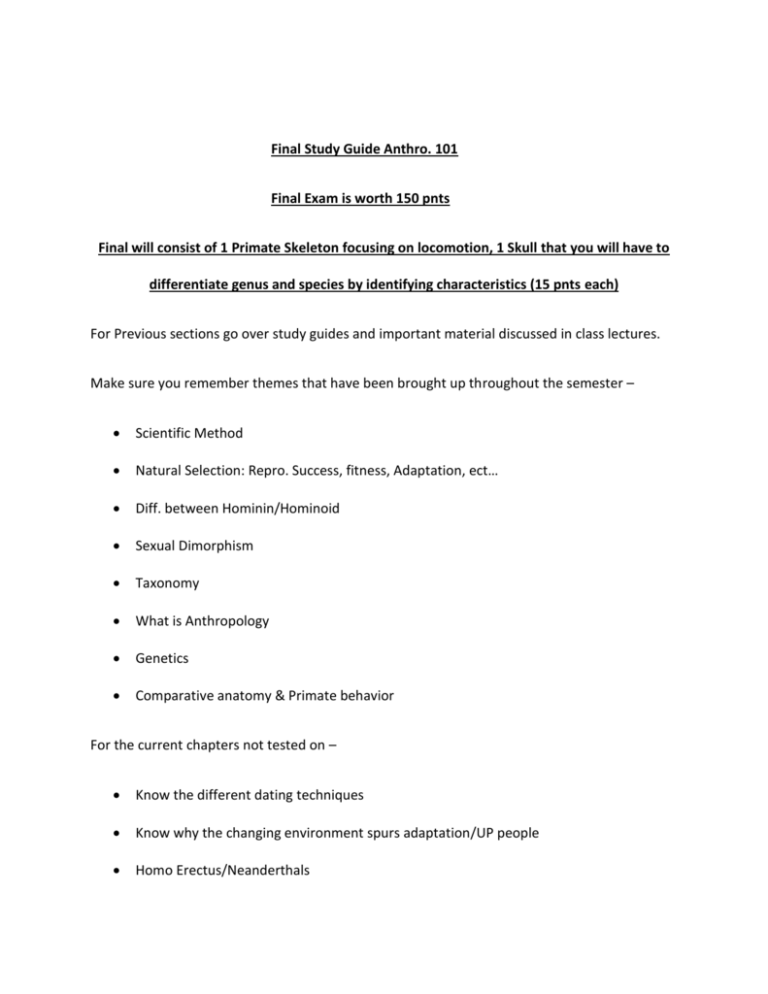
Final Study Guide Anthro. 101 Final Exam is worth 150 pnts Final will consist of 1 Primate Skeleton focusing on locomotion, 1 Skull that you will have to differentiate genus and species by identifying characteristics (15 pnts each) For Previous sections go over study guides and important material discussed in class lectures. Make sure you remember themes that have been brought up throughout the semester – Scientific Method Natural Selection: Repro. Success, fitness, Adaptation, ect… Diff. between Hominin/Hominoid Sexual Dimorphism Taxonomy What is Anthropology Genetics Comparative anatomy & Primate behavior For the current chapters not tested on – Know the different dating techniques Know why the changing environment spurs adaptation/UP people Homo Erectus/Neanderthals Know the different modes of stones tools and what distinguishes them/different tools used Adaptive changes—why, what and when Neanderthal, what their lives were like. Was life easy, how advanced were they? Ect.. Homo sapiens, life, art, & culture Body structure and the environment. The two essay questions will involve topics that have been discussed throughout the semester. 1) From what you have learned during this semester describe why the environment plays a key role in evolution. Explain how adaptation works in the changing of species. How do you think the future of humanity will be affected by a changing environment? Use different examples that have been highlighted in class, through lecture and video. 2) Explain how the fossil record teaches us about the past. What have paleoanthropologists learned about how ancestors of Homo sapiens have adapted to the environment? Describe the changing anatomical features of ancestral hominines. Why is it hard to get information from the fossil record? 3) Describe the process of Natural Selection. Show the role it plays in evolution by competition, variation, fitness, heritability, differential reproductive success, adaptation and speciation. Use three of these terms to explain how Natural Selection occurs in different species. You can use examples given in class or researched independently; make sure you describe them thoroughly.





